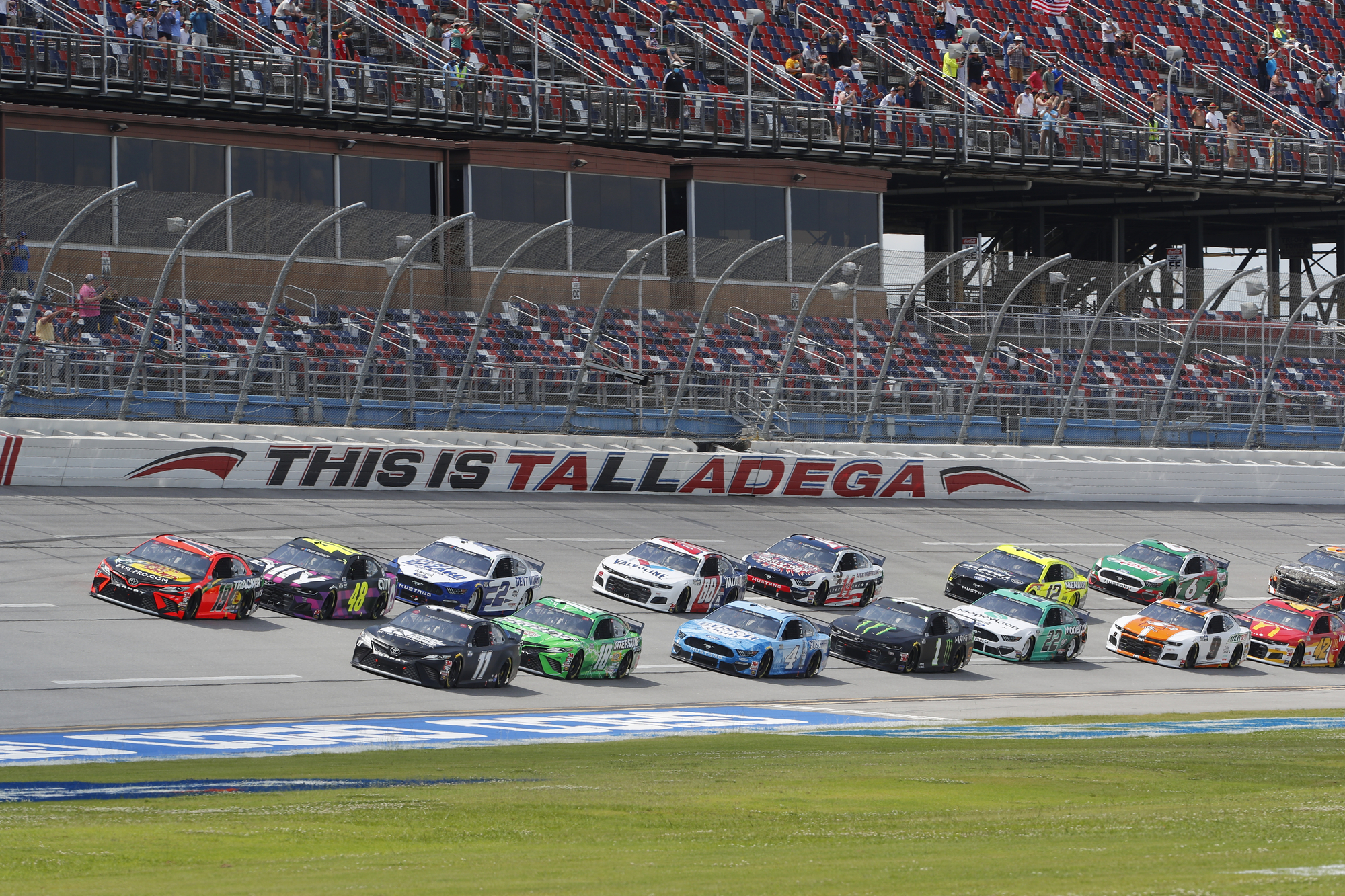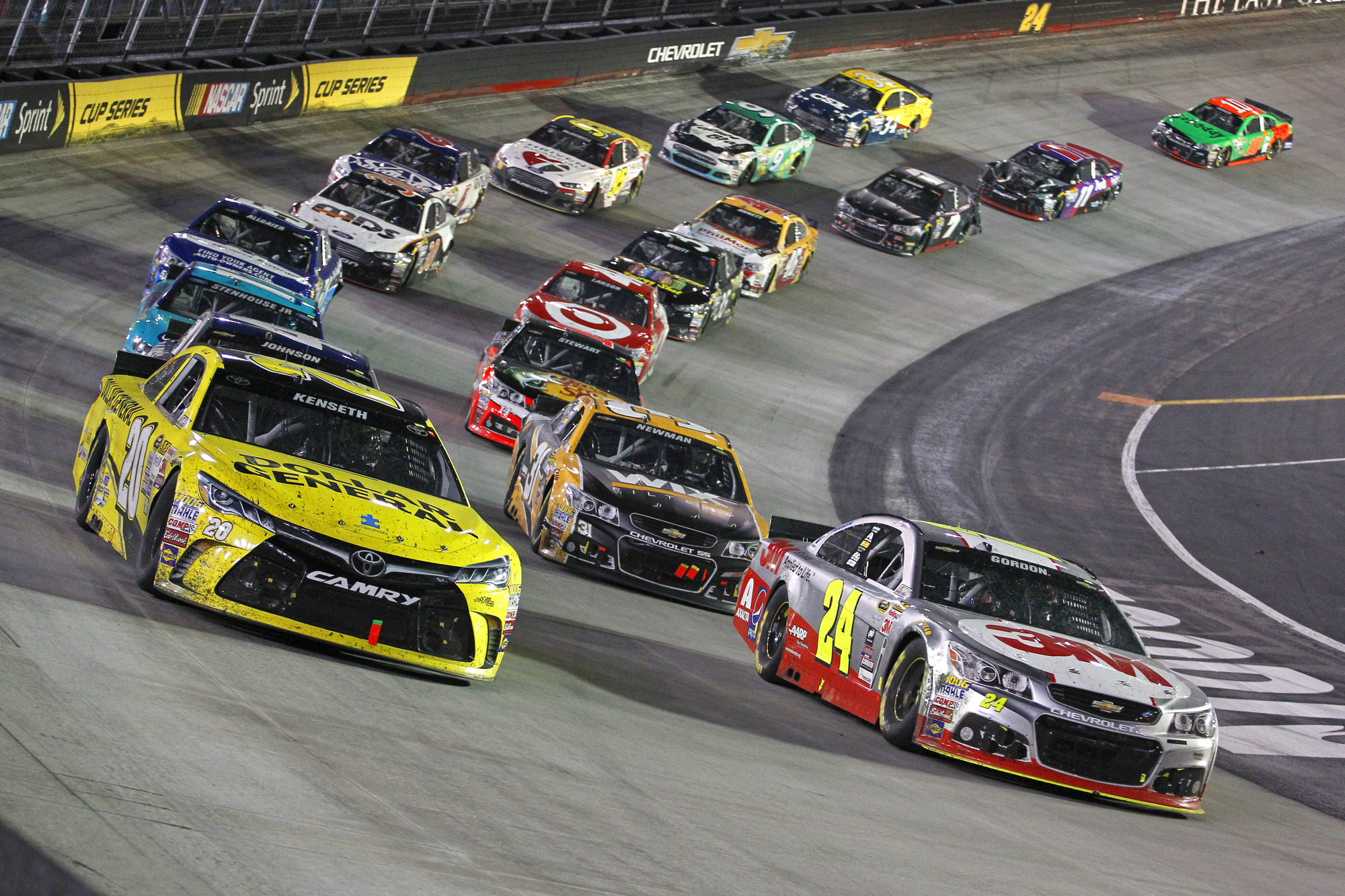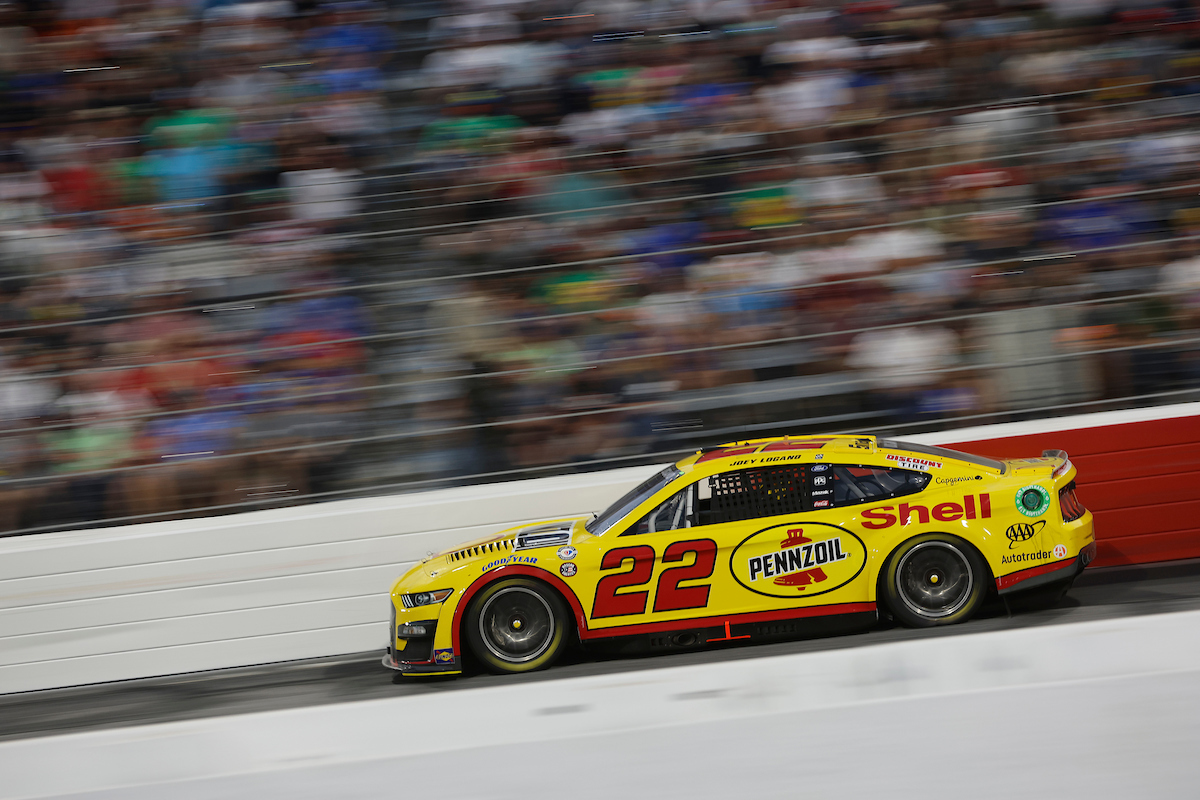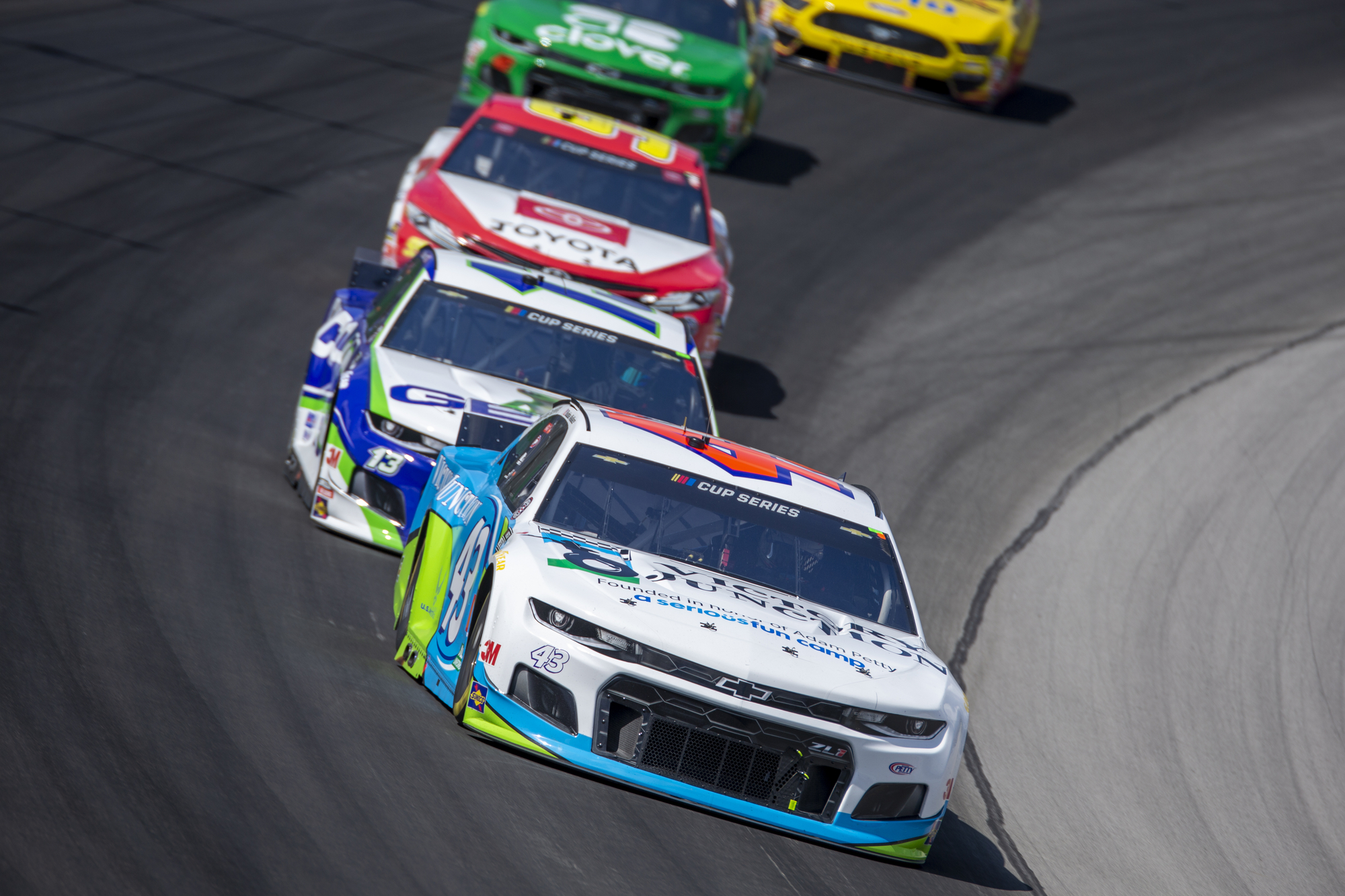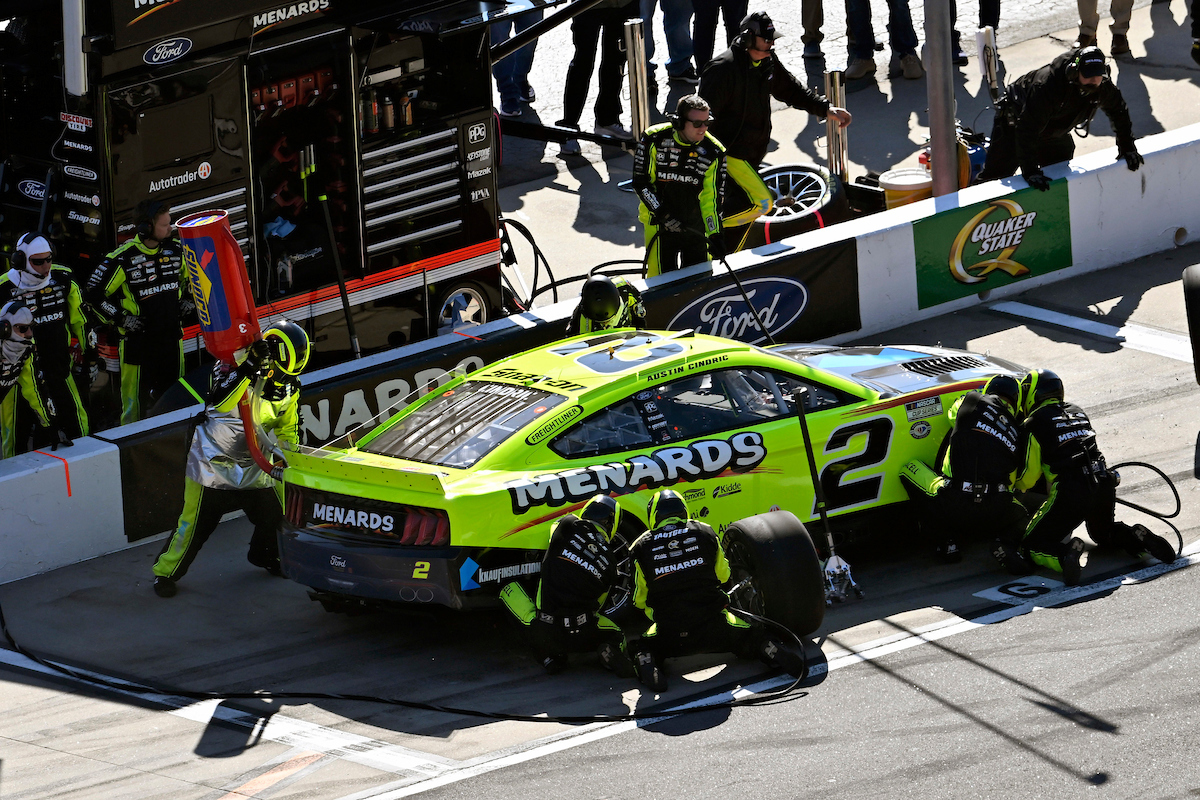How hot are NASCAR tires?
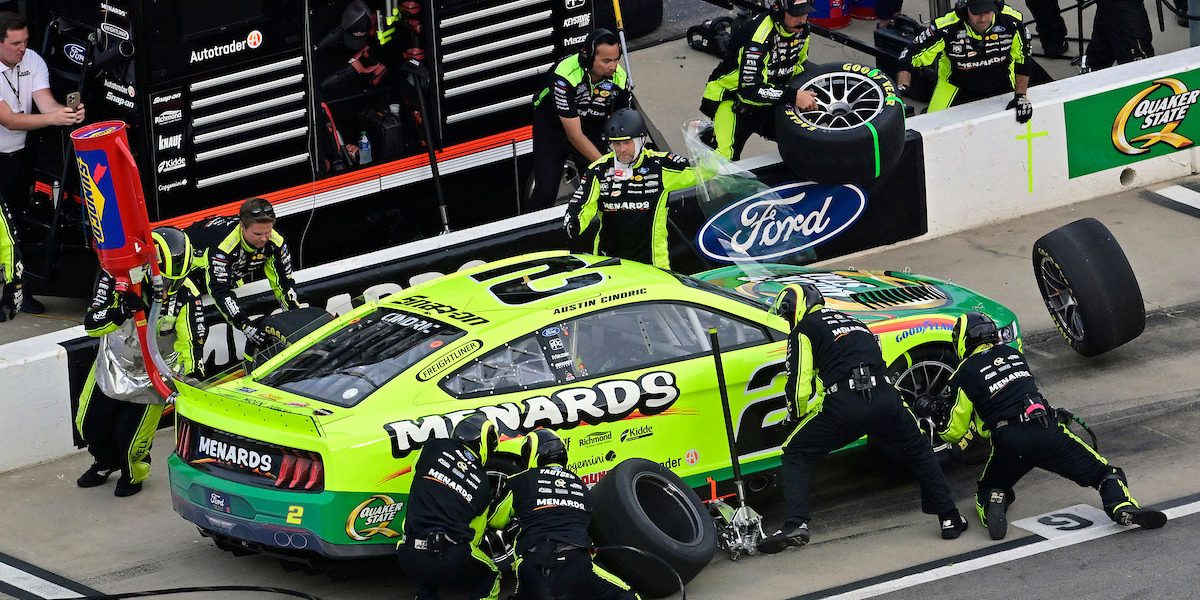
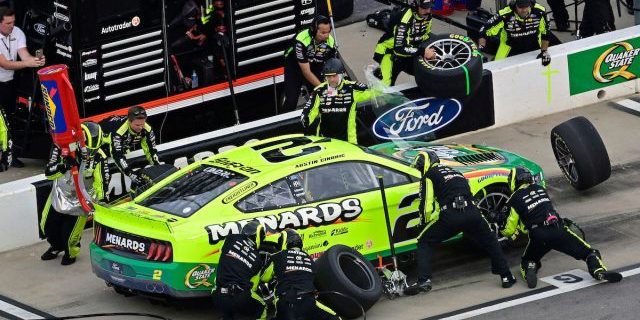
Just how hot are NASCAR tires, and why does it matter? In this article, we’ll take a closer look at the science behind tire heat in NASCAR, including the factors that affect it, the dangers it poses, and the strategies that teams use to manage it. So buckle up and get ready to feel the heat of the track!
Table of Contents
The Basics of NASCAR Tires
NASCAR tires endure a lot of pressure and wear during races – understanding the basics is key for better performance and safety. Take a look at the construction, size, and composition: Radial or Bias Ply, 15-18″ in size, and made of Synthetic Rubber. This helps with speed, handling, and grip on different tracks.
Plus, NASCAR adjusts tire pressure based on temperature, car setup, and track conditions. In the past, cross-hatched tires created more friction on ovals, but now radial patterns are used.
Why Tires Get Hot in a NASCAR Race
NASCAR tires must be kept warm for optimal race performance. Friction creates heat, which increases grip and handling on the track. Tires must be warmed up before every race to keep them durable and reduce wear. Higher temps make rubber softer, giving more traction.
Temps can reach over 200 degrees Fahrenheit during races, due to pressure and friction. Too hot tires can lead to blowouts, so it’s essential to keep them in an acceptable temp range. Each driver has different driving styles, and ambient conditions affect temps too.
Managing tire temperatures during NASCAR races is crucial. Without proper attention, drivers can lose time during pit stops or cause dangerous accidents. Make sure to keep your tires at optimal temps for safety and performance!
Factors that Affect NASCAR Tire Heat
To understand the factors that affect NASCAR tire heat, delve into track temperature and conditions, car setup, driving style, tire compound, and pressure. Explore how each of these sub-sections affects tire heat during a race.
Track Temperature and Conditions
We know several things affect NASCAR tire heat during a race. The track’s environment, like its temperature and conditions, is one of these factors.
To understand the effect of track temperature and conditions on tire heat, here’s data from a typical NASCAR race:
| Track Temperature | Ambient Temperature | Humidity | Tire Surface Temperature |
|---|---|---|---|
| 120°F | 85°F | 40% | 250°F |
| 90°F | 75°F | 50% | 220°F |
| 80°F | 70°F | 60% | 200°F |
High track temps cause tires to overheat faster. Humidity impairs cooling. Marbles, small pieces of rubber, reduce traction and generate more friction. This leads to extra heat and more tire wear.
NASCAR drivers must have their tire strategy planned ahead. Monitor climate patterns at each event and adapt strategies. It’s a win-or-lose factor in the race!
Car Setup and Driving Style
For perfect race performance, a driver needs the right driving techniques and vehicle setup. Here are four steps to optimize car config and driving style.
- Set up suspension for optimal tire heat. This distributes weight & pressure, generating the right heat to increase contact patch. Change setups for different tracks.
- Optimize camber angle/toe-in. Best camber angle is usually 1-3 seconds negative for both wheels. Reduce center cold tire pressure for max traction.
- Adjust wings and diffusers for aerodynamic efficiency. This will boost downforce levels for curves.
- Modify suspension geometry. This helps corner better & rebalance wheel slant to reduce understeer & improve traction.
NASCAR has varying rules on rubber compound which affects setup. Car setup & optimized driving can give drivers a chance to out-perform and achieve top results.
Tire Compound and Pressure
Tire compounds and pressure have a major effect on NASCAR race performance. The right mix of the two can make or break a race!
It’s important to understand the significance of these factors. The table below gives an overview:
| Tire Compound | Pressure |
|---|---|
| Hard | High |
| Medium | Medium-High |
| Soft | Low |
These two elements are critical to consider. Drivers also have to think about weather, car handling, and track layout.
Tires generate heat when they race at high speeds. To reduce this, teams inflate tires to lower the surface area touching the ground. Different race variables can also affect tire temperature. For example, cautions mean cooler tires than green-flag runs.
Before the race, teams plan out different combos of tire compounds and pressure. They can’t change these during the race. Teams use pyrometers to measure temperatures during pit stops. Experts suggest adjusting tire pressures based on previous runs to avoid overheating.
Measuring NASCAR Tire Temperatures
To measure NASCAR tire temperatures, you need to equip your pit crew with the right tools. Infrared temperature sensors, tire probes and pyrometers are essential for achieving accurate temperature readings on the track. In the following sub-sections, we’ll explore how each of these tools can help you measure tire temperatures with ease.
Infrared Temperature Sensors
Infrared temperature measurement devices help in analyzing NASCAR tire temps. They work by detecting heat from an object and calculating its temperature without physical contact. Non-invasive and easy to use, they rely on the emissivity of the object to be accurate.
Tire Probes and Pyrometers
Tire Temperature Devices are used to accurately measure tire temperatures in NASCAR. These devices are called “tire probes” and “pyrometers”. They have different ways of obtaining temperature readings from the tires.
| Device | Function | How it Works |
|---|---|---|
| Tire Probe | Measure Surface Temp. | Has a pointed end that touches the tire, giving surface temp. readings. |
| Pyrometer | Measure Interior Temp. | Uses infrared tech to measure the heat from the tire interior. |
Each device is suited for a specific need. A pyrometer gives an accurate interior reading, but not surface temp. A probe will give you the surface temp.
The Optimal Temperature Range for NASCAR Tires
To understand the optimal temperature range for NASCAR tires in different tracks and conditions, you will delve into the sub-sections of this section. These sub-sections, “Too Hot vs Too Cold Tires” and “Ideal Temperatures for Different Tracks and Conditions”, explain how each state can impact a driver’s performance and offer different solutions for maintaining the perfect temperature range.
Too Hot vs Too Cold Tires
The temp of NASCAR tires massively impacts a racecar’s performance. Too hot or cold tires can lessen grip and speed. To see the effect of temperature on tires, we created a table with real data. It shows how tire pressure and performance change with varying temps. This is ‘Temperature Variations Impacting Tire Pressure and Performance’.
Besides monitoring temp, it’s vital to ensure even heating on all four tires. Uneven heat causes inconsistent grip levels during races. By following tire maintenance best practices, drivers can boost their chances of success.
Improper temp management has caused many tire failures in NASCAR history. In 2008, the Brickyard 400 had a number of tire blowouts due to excessive heat. This event led to talks about improving tire safety for future races.
NASCAR tires must be ready for a range of conditions: hot, cold, wet, and dry.
Ideal Temperatures for Different Tracks and Conditions
Racers understand that track temperature can drastically affect their performance. Hence, finding the ideal temps for different tracks and conditions is essential in NASCAR racing.
A table has been made to show the optimal temperatures for each track and condition. The columns are tracks, and the rows are weather conditions. For instance, on a cool day at Charlotte Motor Speedway, 140°F is recommended for left-side tires and 130°F for right-side tires.
| Weather Conditions | Atlanta Motor Speedway | Bristol Motor Speedway | Charlotte Motor Speedway |
|---|---|---|---|
| Cool | 140°F / 130°F | 155°F / 145°F | 140°F / 130°F |
| Warm | 145°F / 135°F | 160°F / 150°F | 145°F / 135°F |
| Hot | 160°F / 150°F | 175°F / 165°F | 160°F / 150°F |
Tire pressure is quite important too, in deciding the suitable temperature range. Moreover, certain tire compounds work better at specific temperatures than others.
To enhance lap times and reduce tire wear, drivers should have a proper air conditioning system in their vehicles. Also, installing heat shields around crucial parts like brake calipers can help keep lower operating temperatures in diverse weather conditions.
Managing NASCAR Tire Heat during a Race
To manage tire heat during a NASCAR race, you need to be well-equipped with the right knowledge. With the section ‘Managing NASCAR Tire Heat during a Race’ in ‘How hot are NASCAR tires?’, you will discover the solutions to tackle this problem. The sub-sections, ‘Pre-Race Preparations,’ ‘Pit Stop Tire Changes,’ and ‘Adjustments during the Race,’ will provide insight into effective tire heat management strategies.
Pre-Race Preparations
Before their race, NASCAR teams must prepare their tires for performance and safety. They determine the right tire pressure, pre-heat for grip, clean off debris, and store in a temperature-controlled container. They also need to monitor environmental conditions like temperature and humidity, so tire heat can be managed properly during the race. Teams even use an infrared pyrometer to measure tire surface temperatures before and after each run.
Pit Stop Tire Changes
In NASCAR, tire changes during pit stops are key to success. Here’s how to do it:
- When the car enters the pit, the crew starts changing tires.
- The old tires are taken off and the new ones are put on.
- The lug nuts are fastened up and the tire pressure is altered.
- The crew looks for wheel alignment issues and does repairs if necessary.
- The driver returns to the track with new tires, ready to go.
- This process is done several times in a race.
Each team has its own method for tire changes. This can include different types of tires or adjusting tire pressure due to weather.
Adjustments during the Race
When racing, NASCAR teams make quick adjustments to tire heat for the best performance. This is essential and must be done fast and accurately for success on the track.
For managing tire heat during a race there are 3 steps:
- Observing tire temps in the race
- Changing air pressure based on temperature readings
- Varying camber and caster settings if needed
Also, these adjustments need coordination between the driver and crew. The driver provides feedback so the crew can make judgements about tire pressure, camber, caster adjustments.
For example, Chad Knaus made key tire pressure changes during a pit stop that allowed Jimmie Johnson to win his first Daytona 500 in 2006. This story shows that managing tire heat during a race needs both skill and teamwork.
Conclusion: The Importance of NASCAR Tire Temperature Management
The weight of managing NASCAR tire temperature correctly is huge. It’s essential for performance, control, and safety on the track. That’s why teams put in a lot of work, effort, and money to regulate temperature using various methods, such as pressure adjustment and cooling.
Staying in the temperature range for a while is key to success. The range varies with track conditions, car set-up, tire compounds, and outdoor temperature. Drivers make sure their tires are in the sweet spot during a race.
Crews check infrared readings from the tires during pit stops. This helps them adjust internal temperatures using nitrogen gas or some other means. This provides more grip with less wear.
Poor tire management leads to loss of speed, positions, and even crashes.
How hot are NASCAR tires? – Frequently Asked Questions
Q: How hot do NASCAR tires get during a race?
A: NASCAR tires can reach temperatures between 180-220 degrees Fahrenheit during a race.
Q: Why do NASCAR tires get so hot?
A: NASCAR tires get hot due to the friction generated between the tires and the track surface as well as the extreme speeds and forces placed on them during a race.
Q: Can NASCAR tires explode from the heat?
A: It is possible for NASCAR tires to explode if they become too hot, but it is a rare occurrence and race teams take precautions to prevent it from happening.
Q: How do NASCAR teams cool down their tires?
A: NASCAR teams use a variety of methods to cool down their tires, including air blowers, water misters, and tire fenders that can be added to the car to improve airflow over the tires.
Q: What happens if a NASCAR tire blows out during a race?
A: If a NASCAR tire blows out during a race, it can cause the driver to lose control of the car and potentially crash, so it is a serious safety concern for all drivers.






